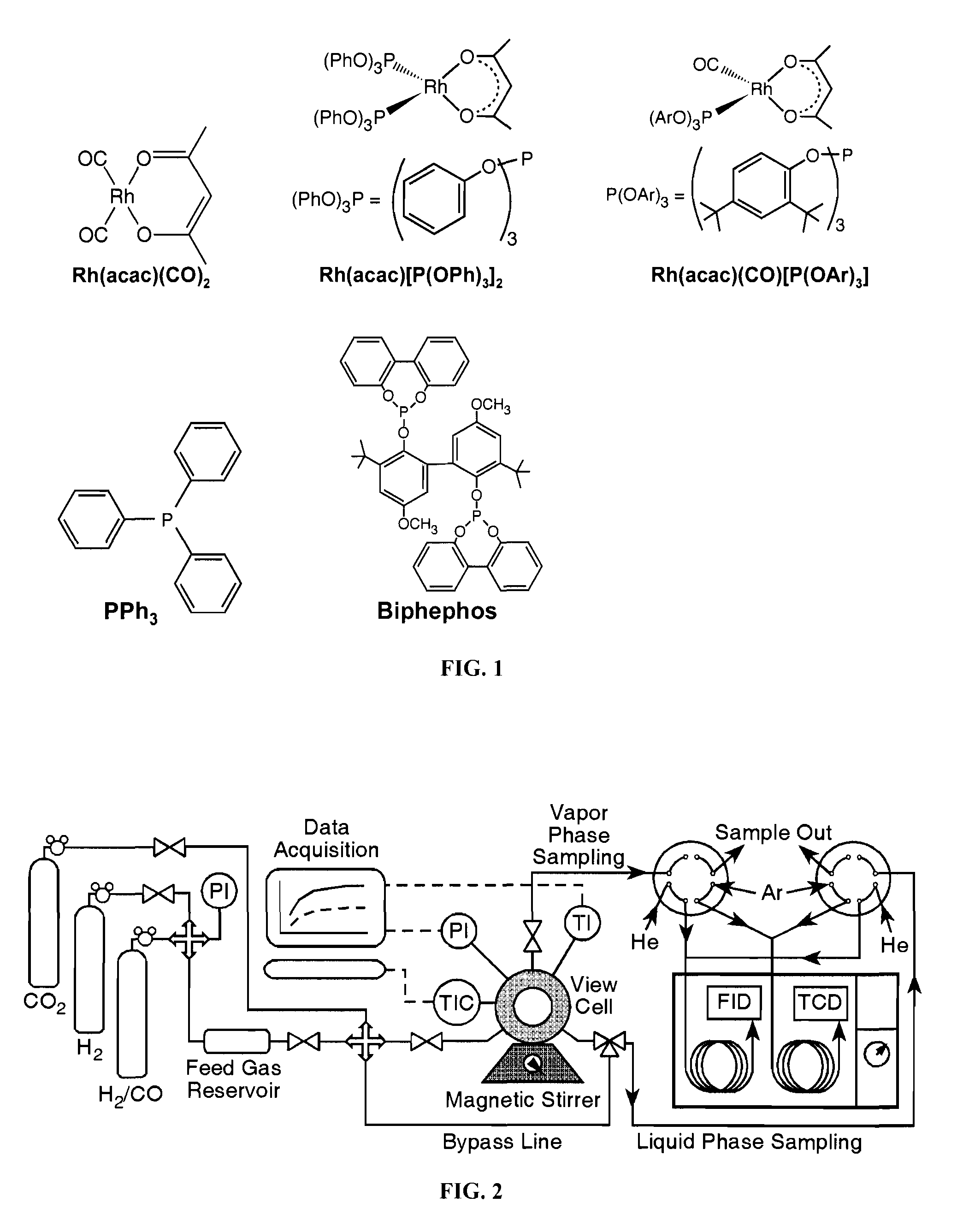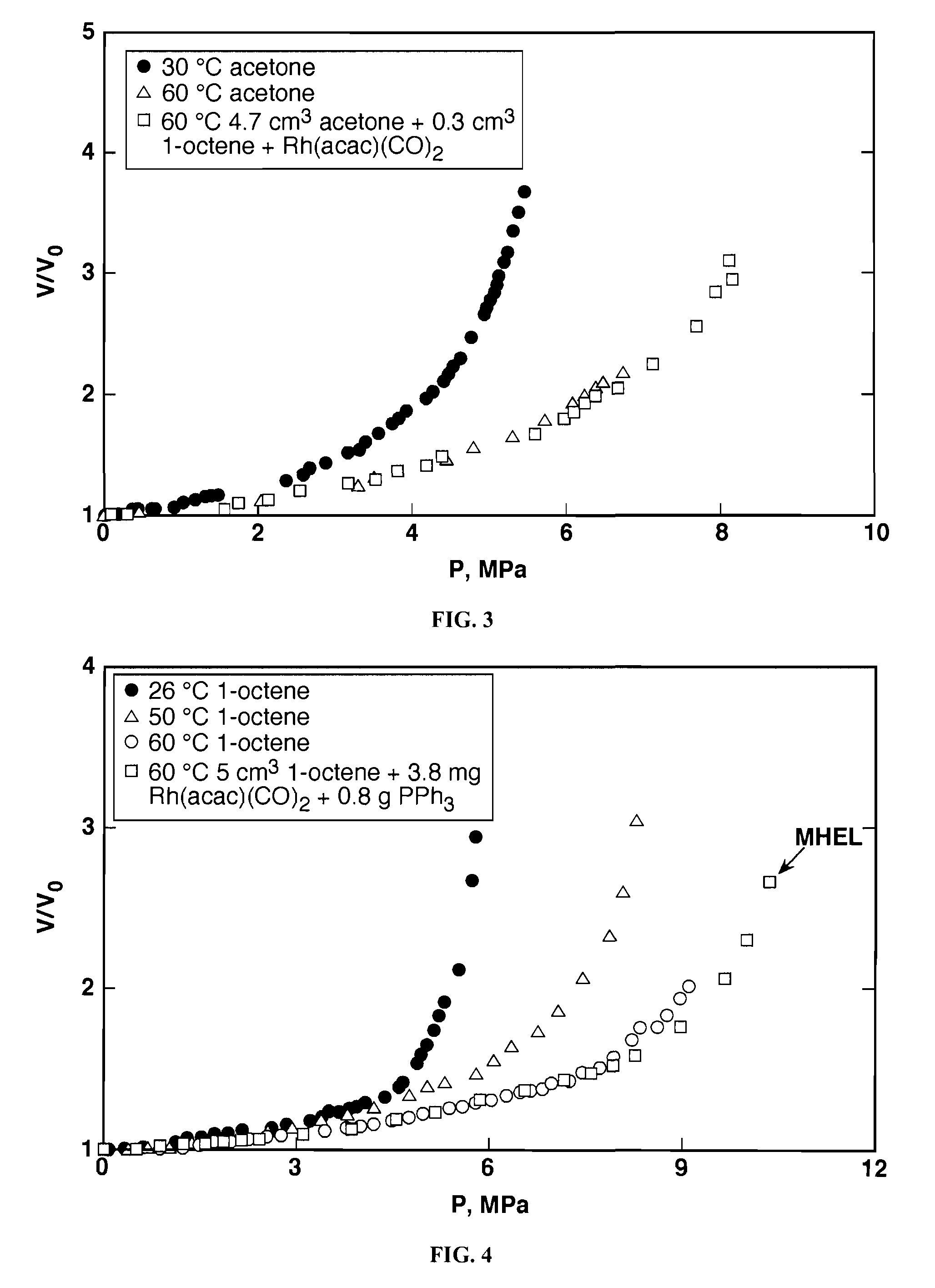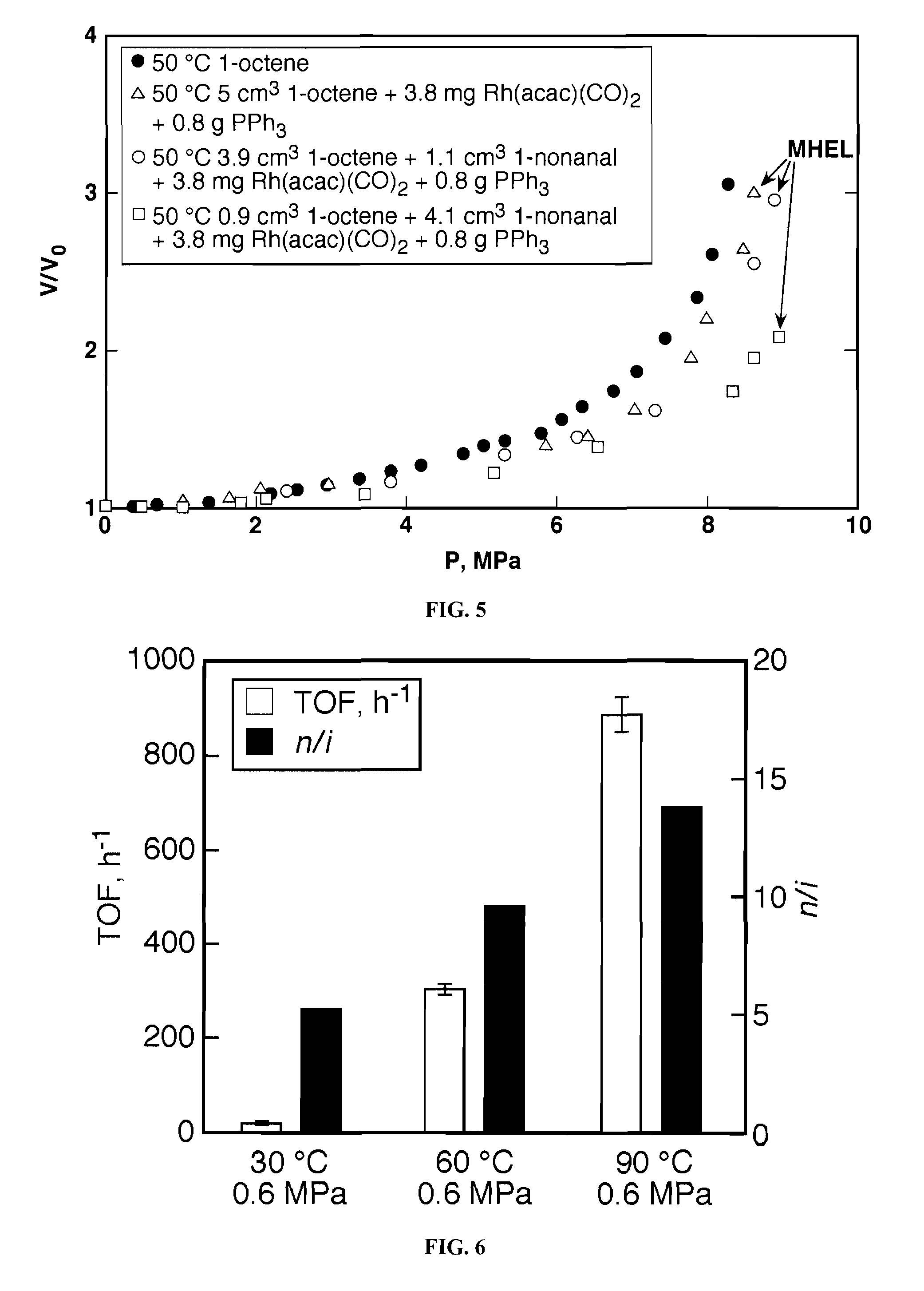Tuning product selectivity in catalytic hydroformylation reactions with carbon dioxide expanded liquids
a technology of hydroformylation reaction and product selectivity, which is applied in the preparation of carbonyl compounds, bulk chemical production, organic chemistry, etc., can solve the problems of altering the regioselectivity of products, altering the chemoselectivity of products, and improving the ratio of linear to branched aldehydes
- Summary
- Abstract
- Description
- Claims
- Application Information
AI Technical Summary
Benefits of technology
Problems solved by technology
Method used
Image
Examples
example 1
Solubility of Reactants and Catalysts in CO2-Expanded Liquid
[0063]The miscibility of CO2 in the reaction mixtures containing dissolved Rh complexes was investigated in a 50-cm3 Jerguson® view cell, placed in a constant temperature water bath. Details of the apparatus were described in Jin et al., Homogeneous catalytic hydroformylation of 1-octene in CO2-expanded solvent media, Chemical Engineering Science, 59 4887-4893 (2004), which is incorporated by reference. The expansion of the liquid mixtures by CO2 is recorded in terms of the relative increase in the liquid volume from the initial state (CO2-free, atmospheric pressure, P0) to the final state (CO2-expanded, equilibrated pressure, P) at the same temperature according to equation 1:
V / V0=V(T,P) / V(T,P0)
[0064]In a typical experiment, the addition of CO2 is continued until either the limit of the operating pressure is reached or a phase separation is observed, with or without catalyst precipitation. The liquid volume corresponding t...
example 2
Catalyst Screening Experiments
[0067]The catalytic hydroformylation experiments were performed in fixed-time batch studies using a 15-cm3 316 stainless steel high-pressure view cell. A schematic of the reactor setup is shown in FIG. 2. Details of the apparatus are discussed in Jin et al., Homogeneous catalytic hydroformylation of 1-octene in CO2-expanded solvent media, Chemical Engineering Science, 59 4887-4893 (2004), which is incorporated by reference. Briefly, the cell is fitted with two sapphire windows, which allow visual observations of the phase behavior and the mixing of the reactor contents. Temperature and pressure are monitored and controlled using a data acquisition system (Camile® TG, Argonaut Technologies). In a typical run in CO2-expanded solvents, a liquid mixture containing the substrate, the catalyst, and the organic solvent is preloaded into the reactor and then heated to the reaction temperature, followed by CO2 addition until the desired volume is reached. Syngas...
PUM
| Property | Measurement | Unit |
|---|---|---|
| volume fraction | aaaaa | aaaaa |
| volume fraction | aaaaa | aaaaa |
| temperature | aaaaa | aaaaa |
Abstract
Description
Claims
Application Information
 Login to View More
Login to View More - R&D
- Intellectual Property
- Life Sciences
- Materials
- Tech Scout
- Unparalleled Data Quality
- Higher Quality Content
- 60% Fewer Hallucinations
Browse by: Latest US Patents, China's latest patents, Technical Efficacy Thesaurus, Application Domain, Technology Topic, Popular Technical Reports.
© 2025 PatSnap. All rights reserved.Legal|Privacy policy|Modern Slavery Act Transparency Statement|Sitemap|About US| Contact US: help@patsnap.com



